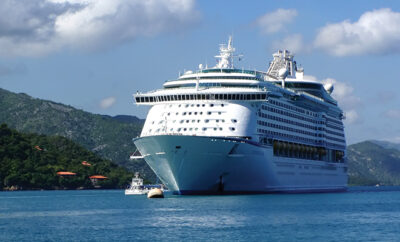
Smooth and Stress Free: Canada by Rail
Traveling by train evokes a bygone era when travel was viewed as a pleasant vacation. Travelers looked forward to days at sea or on the train. They dressed for dinner and enjoyed the company of their compatriots. It’s not always so in today’s world, where travel is often rushed and harried.
But if you travel by train in Canada, you can slip back into this past era while enjoying modern amenities. Canadian train trips can be short, from one city to another, or cross country, a cool 2,775-mile (4,466-kilometer) journey.
The cross-country journey is stunning, with emerald green lakes, abundant wildlife and fields in various stages of growth. The full trip begins in Toronto, continues through Winnipeg, Edmonton, Jasper National Park and Vancouver, as it traverses the country during four nights and three days. VIA Rail’s Canadian runs three times a week in summer and twice in winter. Some suggest flying or driving to certain points, such as Edmonton, and mounting the train for the trip across the Rockies. But whether you go in summer or winter, the views are stunning and the trip is pleasant.
The Canadian is the flagship of VIA Rail’s passenger line. VIA Rail rebuilt and upgraded the stainless steel streamliner coaches that originally served the Canadian Pacific’s Canadian. Passengers on the train have the option of three different types of accommodations: Economy, Sleeper Plus and Prestige. Each class has its perks, but the Prestige Class is the most luxurious, offering a sleeper compartment with a double bed, ensuite toilet and shower, flat-screen TV with video selections, complimentary mini-bar and an extra-large window. All meals are included; drinks cost extra. The Sleeper Plus and Prestige passengers have exclusive access to the Park Car, the signature car of the train and always the last car. Passengers can socialize, listen to music, enjoy wine tastings, and absorb the scenery in the Bullet lounge.
One of the perks of traveling by train is that you may stop at different places along your route. For example, you might like to stop over in Winnipeg for an extra day or so. You can, with VIA Rail’s blessing. However, you must make a reservation for a specific train and date; you can’t just book an open ticket and get on and off at will. Use VIA Rail’s multi-city option rather than purchasing separate tickets for each leg of your trip. Let the ticket agents help you pre-book stopovers, and don’t forget, the Canadian doesn’t run daily.
Scenic Routes
From Montreal to Halifax on the Océan route, you can relax and enjoy the 836-mile (1346 kilometer) trip of stunning views as the train leaves the big city behind and glides through the quiet countryside until you arrive at your destination. Maritime history lessons are given onboard. Lighthouses on boulder-strewn coasts make this a unique trip to treasure.
Winnipeg to Churchill is a two-day trip of 1,056 miles (1,700 kilometers) through the tundra that takes you to the shores of Hudson Bay in subarctic Northern Manitoba. In summer, mid-June through August, you might see beluga whales in the Churchill River after the ice breaks up, and in winter, October or November, you can drive in tundra vehicles through the terrain to see polar bears wandering around. From mid-November to mid-April, Churchill is one of the three best places on earth to see the fabulous aurora borealis.
Jasper to Prince Rupert is part of the longer cross-country Canadian trip. The two-day trip, 720 miles (1,160 kilometers) between the Rockies and the north Pacific, encompasses great stretches of wilderness, lakes and rivers with small settlements, farms and sawmills. The wildlife is spectacular; bear, moose, elk, deer, eagles, hawks and seals dot the landscape depending upon the season. Many of the settlements date to the early 1900s when the Grand Trunk Pacific Railroad was finishing the northern Canadian transcontinental rail line.
Other Pointers
U. S. citizens need a passport, a passport card or a NEXUS card. For visits over 180 days a visa is also required. In most large cities, you will not have problems with the exchange rate of U.S. dollars to the Canadian dollar. Some ATM machines will give you the correct amount of Canadian dollars when you withdraw funds.
A good guidebook will help you see more on your trip than traveling without one. The Man in Seat 61, a comprehensive guide website, recommends Lonely Planet Canada or Rough Guide to Canada. Another guide worth having is Trailblazer’s Trans-Canada Rail Guide. It contains a wealth of information about the cities along the line and will help you plan your journey.
Travel insurance from a reputable insurer is essential. Be sure to add in medical coverage. There’s nothing worse than having a catastrophic illness or accident ruin your trip than being unprepared for it.
Once you are prepared, relax and enjoy your vacation. You’ve earned it! ■
Sources: canada.com, seat61.com, theglobeandmail.com, thestar.com and viarail.ca.







